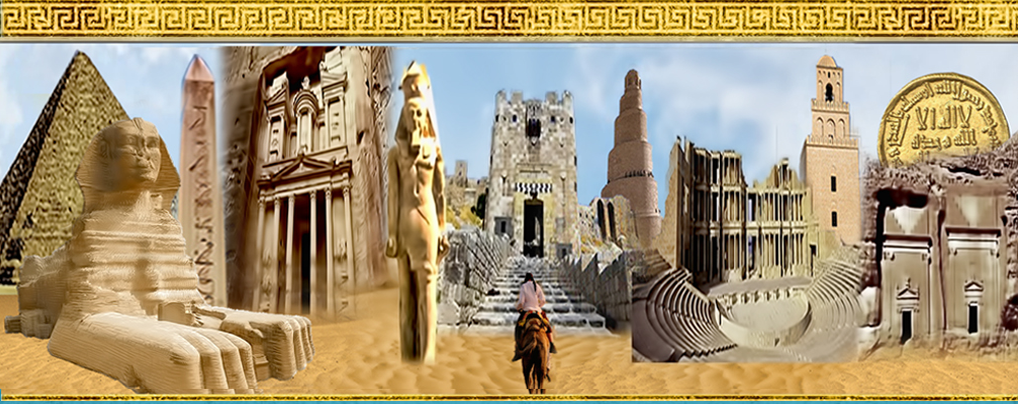Journal of the General Union of Arab Archaeologists

Abstract
Iron Age II is considered the classical period of the Iron Age (figure: 2([1])). This period shows sudden increase in distribution and diversification in settlement pattern, in South-eastern Arabia ([2]). The settlements during this period expanded to include inland ([3]), mountains ([4]) and coastal sites ([5]). Settlements became more diverse to include non-residential architecture. An appearance of irrigation technology (Falaj) along with camel domestication coincides with this increase. This increase was accompanied by regional ([6])(between the varied types of settlements) and trans-regional contact (with south Arabia) and goods exchange([7]) ([8]) ([9])
The layout, the location, the structure and the material culture excavated from this period reflects a complex community ([10]) ([11]). This manifested in the appearance of a belief system related to both irrigation and bronze production (the snake cult) ([12]), specialized labour in pottery ([13]), metal production ([14]) ([15]) and administration systems ([16]), fortification structures related to the agriculture activity ([17]), symbolic (axe heads on the stamp seals) and prestigious goods for elites ([18]).
This paper argues that irrigation technology was responsible for creating a social elite class. This class was responsible for cyclic production, the expansion and the diversification of settlement patterns using the domestication of the camel.
([1]) MAGEE, P.Beyond the Desert and the Sown: Settlement Intensification in Late Prehistoric South-eastern Arabia. Bulletin of the Late Prehistoric Southeastern Arabia.2007, p.85
([2]) MAGEE, P. Settlement patterns, polities and regional complexity in the southeast Arabian Iron Age Paléorient 24. PERSEE Program: 1998b, p.49
([3]) HERRMANN, J.T., J. CASANA. & H.S. QANDIL. A sequence of inland desert settlement in the Oman peninsula: 2008-2009 excavations at Saruq al-hadid, Dubai, UAE Arabian Archaeology and Epigraphy 23. Wiley-Blackwell: 2012, p.50–69.
([4]) Haser in AVANZINI, A. (ed.) Eastern Arabia in the First Millennium BC. Italy:‘L’Erma’ di Bretschneider. 2010, p.162
([5]) MOUTON, M. & J. SCHIETTECATTE. In the Desert Margins: The Settlement Process in an Ancient South and East Arabia. Italy: ‘L’Erma’ di Bretschneider. 2014
([6]) BENOIST, A. & S. MÉRY. Initial results from the programme of petrographic analysis of Iron Age pottery from the United Arab Emirates Arabian Archaeology and Epigraphy 23. Wiley-Blackwell: 70–91.2012, p.88
([7]) MAGEE, P. The impact of southeast Arabian intra-regional trade on settlement location and organization during the Iron Age II period Arabian Archaeology and Epigraphy 15. Wiley-Blackwell: 24–42. 2004
([8]) MAGEE, P. The production, distribution and function of Iron Age bridge-spouted vessels in Iran and Arabia: Results from recent excavations and geochemical analysis Iran 43. JSTOR. 2005, p.93
([9]) Magee.2007
([10]) MAGEE, P. & E. THOMPSON. 2001. Excavations at Muweilah 1997-2000 Proceedings of the Seminar for Arabian Studies 31. Archaeopress: 115–30. http://www.jstor.org/stable/41223675 2001, p.129
([11]) Magee.1998b, p.54
([12]) BENOIST, A. An iron age II snake cult in the Oman peninsula: Evidence from Bithnah (Emirate of Fujairah) Arabian Archaeology and Epigraphy 18. Wiley-Blackwell: 34–54.2007, p.50
([13]) Benoist & Méry. 2012, p.88
([14]) MAGEE, P. New Evidence of the Initial Appearance of Iron in Southeastern Arabia Arabian Archaeology and Epigraphy 9. Wiley-Blackwell.1998a, p.114
([15]) Nashef in AVANZINI, A. (ed.) 2010. Eastern Arabia in the First Millennium BC. Italy:‘L’Erma’ di Bretschneider.2010, p.215
([16]) Al- TIKRITI, W. in A. Avanzini (ed.) Eastern Arabia in the First Millennium BC. Italy: ‘L’Erma’ di Bretschneider. 2010, p.240
([17]) Magee. 2014, p.237
([18]) Magee. 1998b, p.56
Recommended Citation
,Noha, Kamel Moussa
(2019)
"THE CONTRIBUTION OF THE DOMESTICATED CAMEL AND ADVANCED IRRIGATION TECHNIQUES (THE HORIZONTAL WELL/FALAJ SYSTEM) TO THE IRON AGE ECONOMY AND SETTLEMENT PATTERNS OF THE OMAN PENINSULA AND ARABIA.,"
Journal of the General Union of Arab Archaeologists: Vol. 4:
Iss.
1, Article 3.
Available at:
https://digitalcommons.aaru.edu.jo/jguaa/vol4/iss1/3

